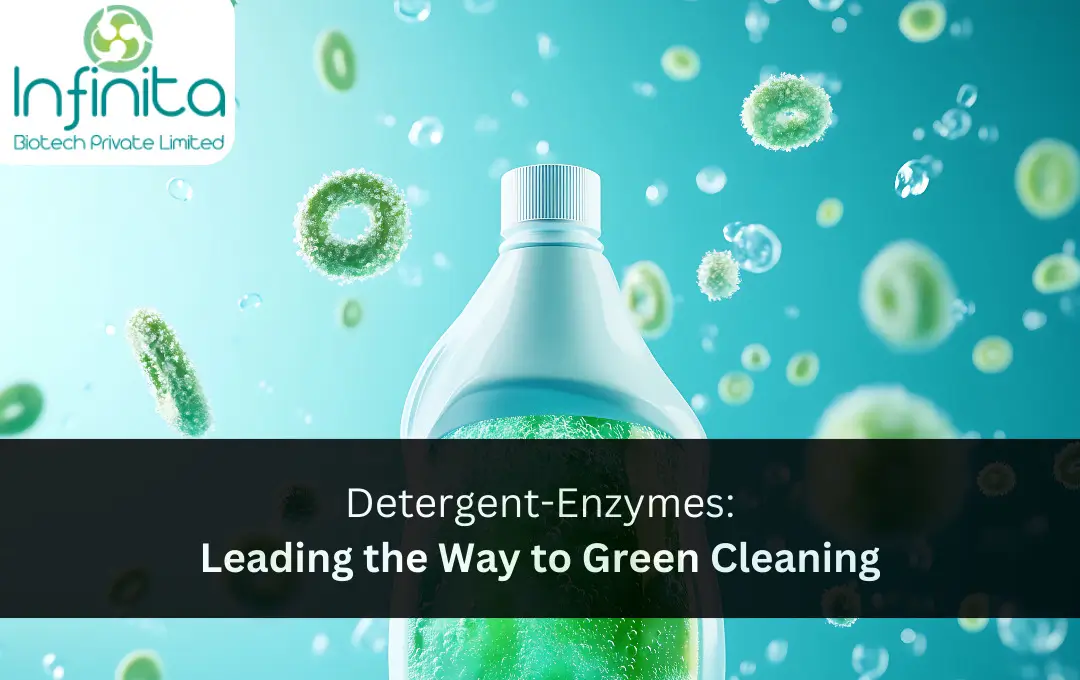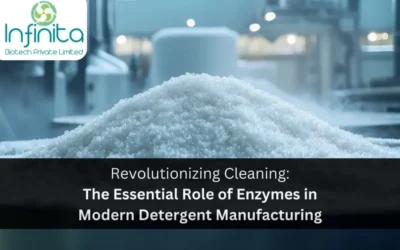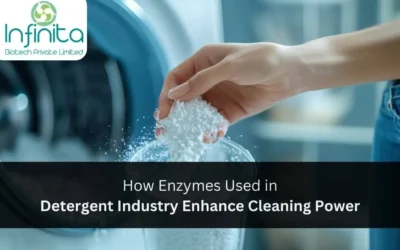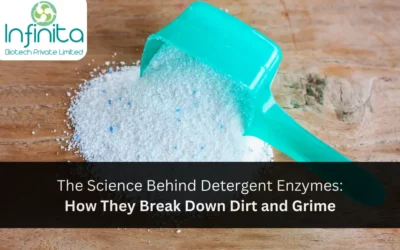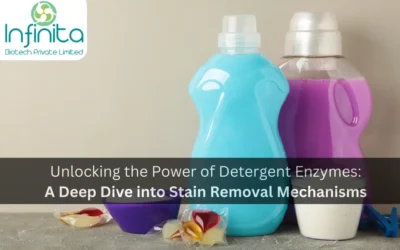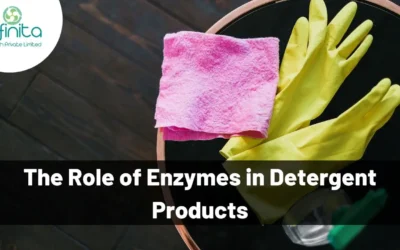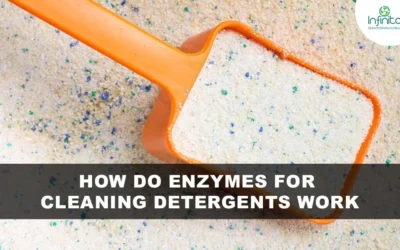Introduction
As the world becomes more eco-conscious, the demand for sustainable cleaning solutions has surged. Detergent enzymes, at the forefront of green cleaning innovations, offer a powerful, eco-friendly alternative to traditional chemical-based detergents. These biological agents work effectively at breaking down stains and dirt, helping reduce the environmental impact of cleaning.
What Are Detergent-Enzymes?
Defining Enzymes in Cleaning Products
Detergent enzymes are biological molecules, typically proteins, that catalyze reactions. In cleaning, they work by speeding up the breakdown of organic materials like food, oils, and proteins. Their ability to target specific types of stains makes them ideal for inclusion in detergents.
Key Types of Enzymes Used in Detergents
There are several types of enzymes commonly found in cleaning products: proteases, lipases, amylases, and cellulases. Each targets different types of stains, contributing to a highly effective and specialized cleaning solution.
The Environmental Impact of Traditional Detergents
Chemical Residue and Water Pollution
Traditional detergents often contain harsh chemicals that don’t break down easily, leading to chemical residues that end up in waterways. These residues can disrupt aquatic ecosystems, killing wildlife and altering the chemistry of water bodies.
The Long-Term Effects on Ecosystems
Over time, the accumulation of these harmful substances leads to eutrophication, a process that depletes oxygen in water bodies, severely damaging marine life. This long-term damage to ecosystems makes it essential to seek greener alternatives like enzyme-based detergents.
How Enzymes Work in Detergents
Enzymes as Biological Catalysts
Enzymes function as catalysts, accelerating the breakdown of complex molecules into smaller, more manageable pieces. In detergents, they help remove organic stains by breaking them down at the molecular level, making it easier for other cleaning agents to wash them away.
Breaking Down Stains at the Molecular Level
Each enzyme type works by targeting specific molecular bonds within the stain. This action helps break down tough stains more effectively than traditional detergents, which often rely on harsh chemicals.
Advantages of Enzyme-Based Detergents
Lowering Washing Temperatures
One significant advantage of enzyme-based detergents is their ability to function efficiently at low temperatures. Traditional detergents often require hot water to be effective, but enzymes work well even in cold water, reducing energy consumption during washing.
Reducing Chemical Usage
Because enzymes are so efficient at breaking down stains, they help reduce the need for strong chemical cleaners. This not only improves environmental sustainability but also makes enzyme-based detergents gentler on clothes and skin.
The Role of Proteases in Stain Removal
Targeting Protein-Based Stains
Proteases are enzymes that break down proteins. They are particularly effective in removing stains from food, blood, and sweat, making them a critical component of many laundry detergents.
Effectiveness on Food and Organic Debris
By breaking down the peptide bonds in proteins, proteases dissolve tough, protein-based stains that are resistant to traditional cleaning methods, ensuring deeper cleaning in both clothing and surfaces.
Lipases and Their Effect on Grease
Degrading Fats and Oils
Lipases target lipids, the fats and oils commonly found in kitchen grime and greasy laundry stains. These enzymes break down oil molecules into smaller, water-soluble components that can be easily rinsed away.
Applications in Kitchens and Laundry
Lipase-based detergents are especially useful in kitchens for cleaning greasy surfaces and cookware. In laundry applications, they help remove oily stains from clothes, offering a more sustainable alternative to chemical solvents.
Amylases for Carbohydrate Stains
Breaking Down Starch-Based Stains
Amylases are enzymes that break down starches and carbohydrates, making them ideal for removing food stains like pasta, sauces, or even baby food spills.
Use in Food Processing and Daily Cleaning
Amylase-based detergents are commonly used in both food processing industries and household cleaning to tackle everyday carbohydrate-based stains that are difficult to remove with conventional detergents.
Cellulases for Fabric Care
Softening Textiles and Preventing Pilling
Cellulases break down cellulose, the main component of plant-based fibers. In detergents, they help soften fabrics, reduce pilling, and prevent the buildup of fuzz, extending the life of clothes while keeping them fresh.
Improving Fabric Longevity
By gently removing damaged fibers, cellulases maintain the quality and appearance of textiles over time, ensuring that fabrics stay soft and durable, even after multiple washes.
How Detergent-Enzymes Promote Sustainability
Biodegradability and Eco-Friendly Production
Enzyme-based detergents are inherently more biodegradable than synthetic chemical cleaners. The enzymes used in detergents break down naturally and do not leave harmful residues in the environment, supporting more eco-conscious cleaning practices.
Supporting Green Consumer Choices
For consumers seeking environmentally responsible options, enzyme-based detergents provide a greener alternative without sacrificing cleaning performance. As demand for sustainable products grows, the adoption of enzyme detergents is becoming a key trend in the cleaning industry.
Challenges in Enzyme Detergent Formulation
Stability and Storage Conditions
One challenge in enzyme-based detergent formulation is ensuring the enzymes remain stable during storage. Enzymes can degrade if exposed to high temperatures or moisture, requiring careful formulation and packaging to preserve their efficacy.
Compatibility with Surfactants and Other Chemicals
Detergent formulation is complex, requiring a balance between enzymes and other ingredients like surfactants. Ensuring that these components work together without interfering with the enzyme’s activity is essential for producing an effective cleaning product.
The Future of Enzymatic Detergents
Innovations in Enzyme Engineering
As enzyme technology continues to advance, scientists are developing tailored enzymes that are even more efficient and stable in detergents. These innovations promise to improve cleaning performance while further reducing environmental impact.
Expanding Applications in Industrial and Household Cleaning
The use of enzymes in detergents is expanding beyond household laundry to include industrial cleaning applications. With continued advancements in enzyme engineering, the potential for enzyme-based cleaners in sectors like healthcare, food processing, and sanitation will continue to grow.
Conclusion
Detergent-enzymes represent a monumental shift toward green cleaning, offering powerful, sustainable alternatives to traditional chemical detergents. As consumers and industries seek more eco-friendly cleaning solutions, enzyme-based detergents will continue to lead the way, shaping the future of cleaning through innovation, sustainability, and efficiency.
